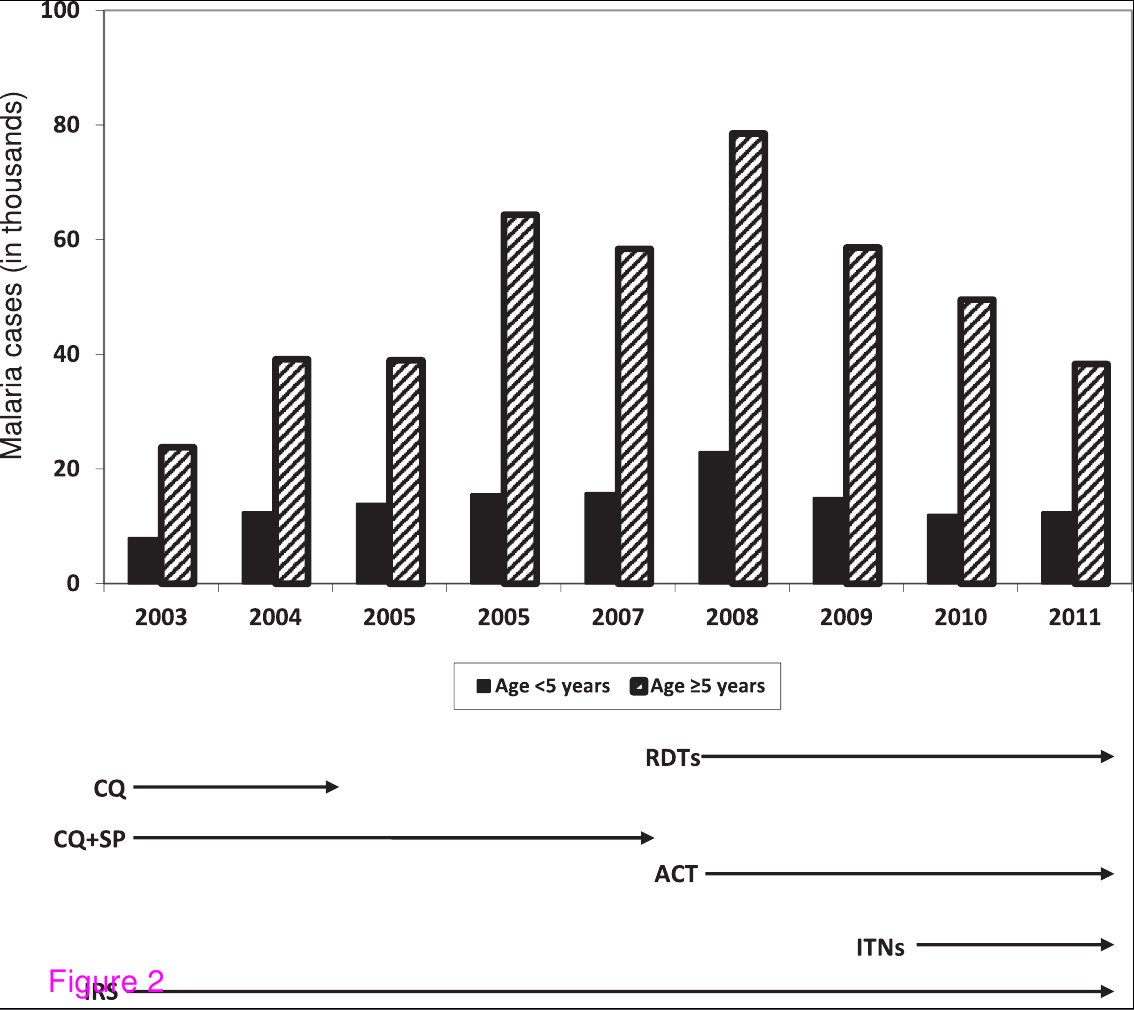Success story! #Malaria burden decreases in #Mutasa, #Zimbabwe after interventions – http://t.co/oio4WhYtgk #OADW
— BMC (@BioMedCentral) July 1, 2013
BioMed Central wrote this tweet twice twice the last days. They state: “Success story! Malaria burden decreases … after interventions”. Nothing wrong about the last part of the statement. In the article they see a decline in malaria cases after interventions were scaled up, but is it enough to call it a success story? I would love to see evidence malaria declining with or without interventions, and good documentation interventions are working; and I love to see the authors presenting historical data on malaria incidence, but in this case I think BioMed Central forgot it is not a newspaper, but a publisher of scientific articles.
Lets look at the figure behind the “success story”:
What we see is a steady increase from 2003-2008; with IRS, and CQ+SP. After RDTs, ACT and ITNs were introduced we see a steady decline, noting that data from 2011 are not complete. Based on these data I find it hard to claim this is a success story. If we are to believe the data, the number of malaria cases is still higher than 2003-2005, and there are no evidences the recent decline was due to interventions. In my eyes, it could be due to interventions, but as likely is natural variability. The article does not test any hypothesis, and does not prove interventions caused a reduction in malaria cases, but despite this, BioMed Central calls it a “success story”. It seems like BioMed Central might have problems knowing if it is a newspaper wanting to make headlines, or a scientific publisher making evidence based statements. Malaria Journal’s coverage of the same article
Changes in the burden of malaria following malaria control interventions in Mutasa District, Zimbabwe http://t.co/NgczG1ceGS #malaria
— Malaria Journal (@MalariaJournal) July 1, 2013
makes a lot more sense, describing the article in a way which reflects the content. I hope this is a one time mistake from @BioMedCentral.
